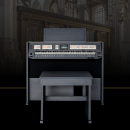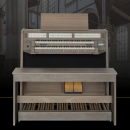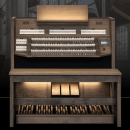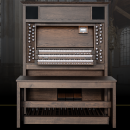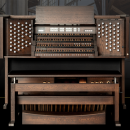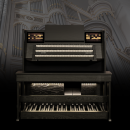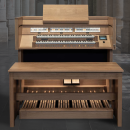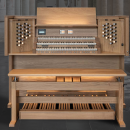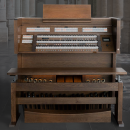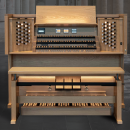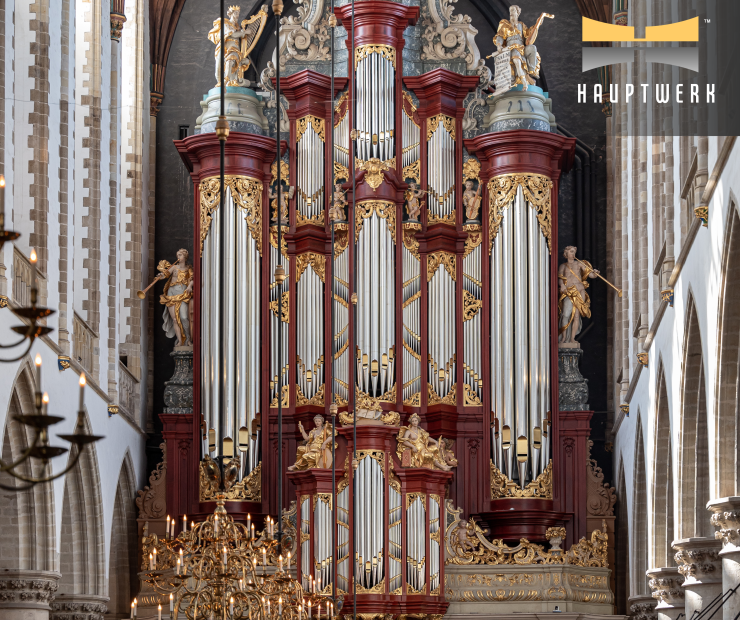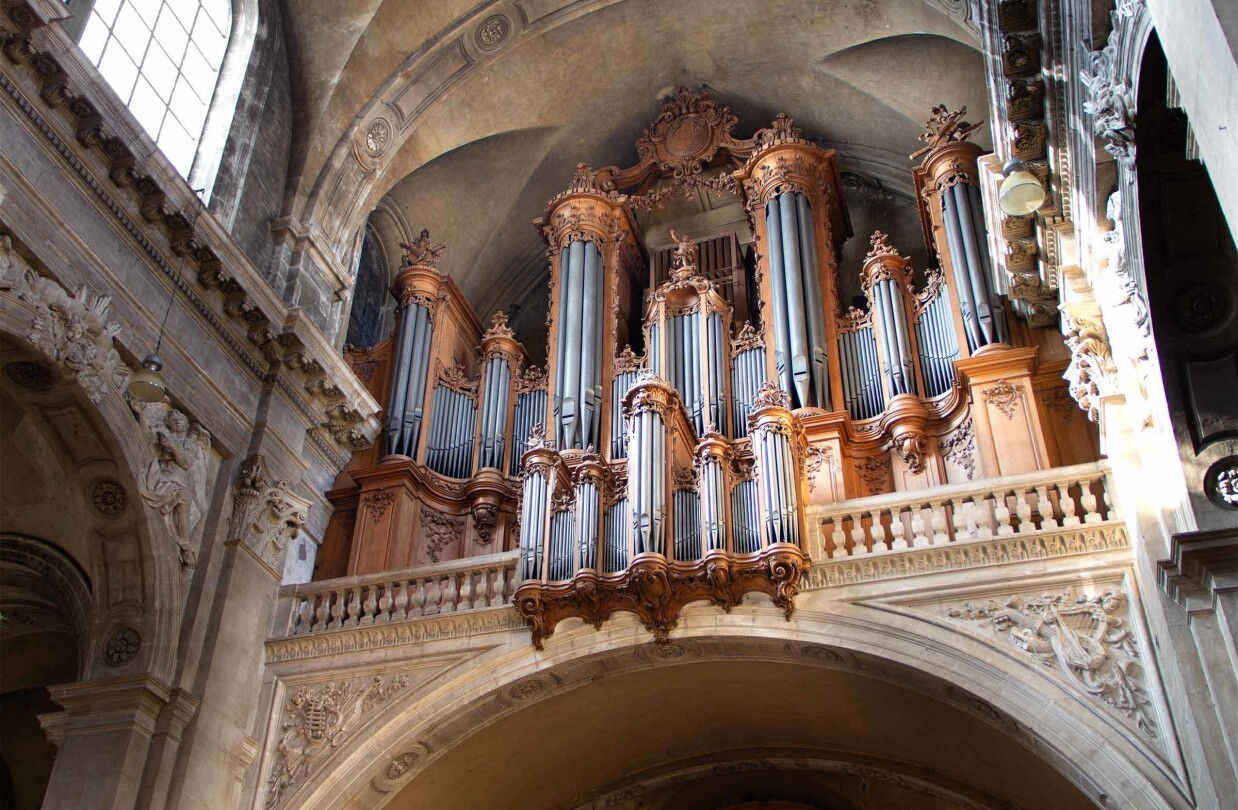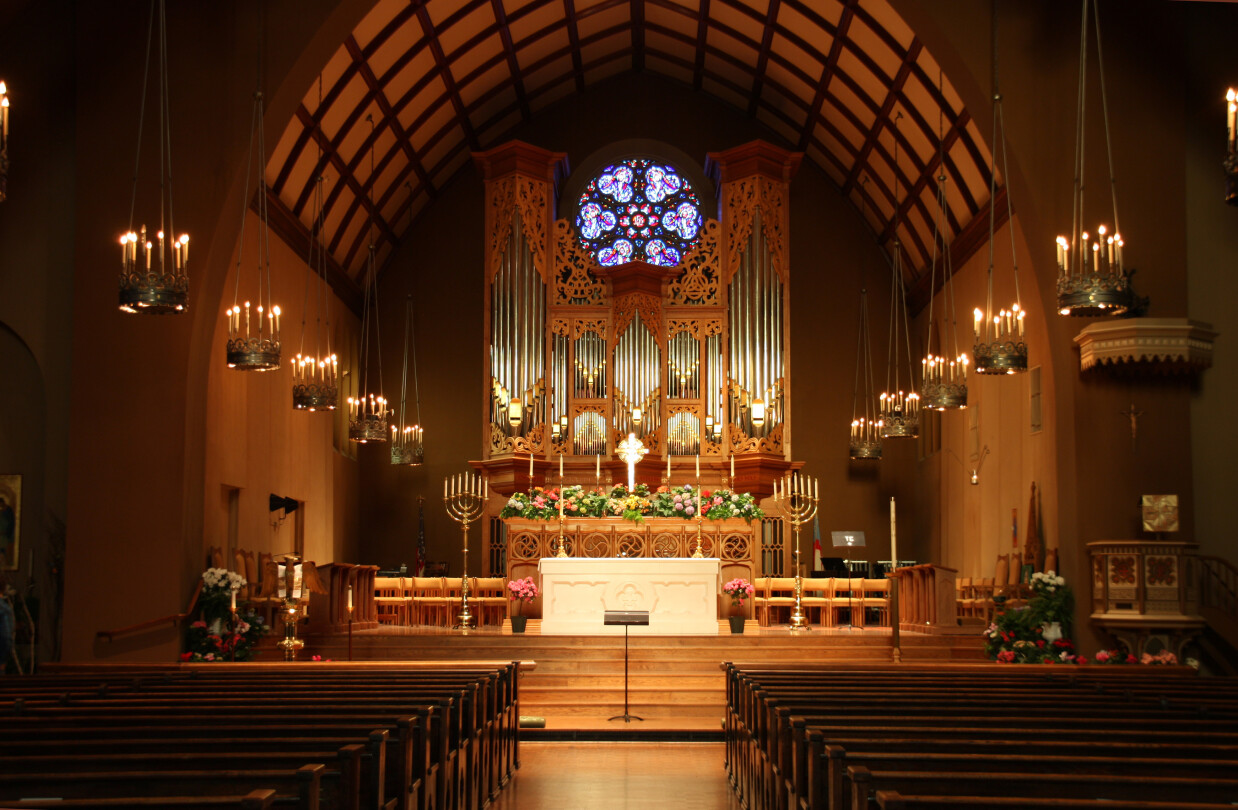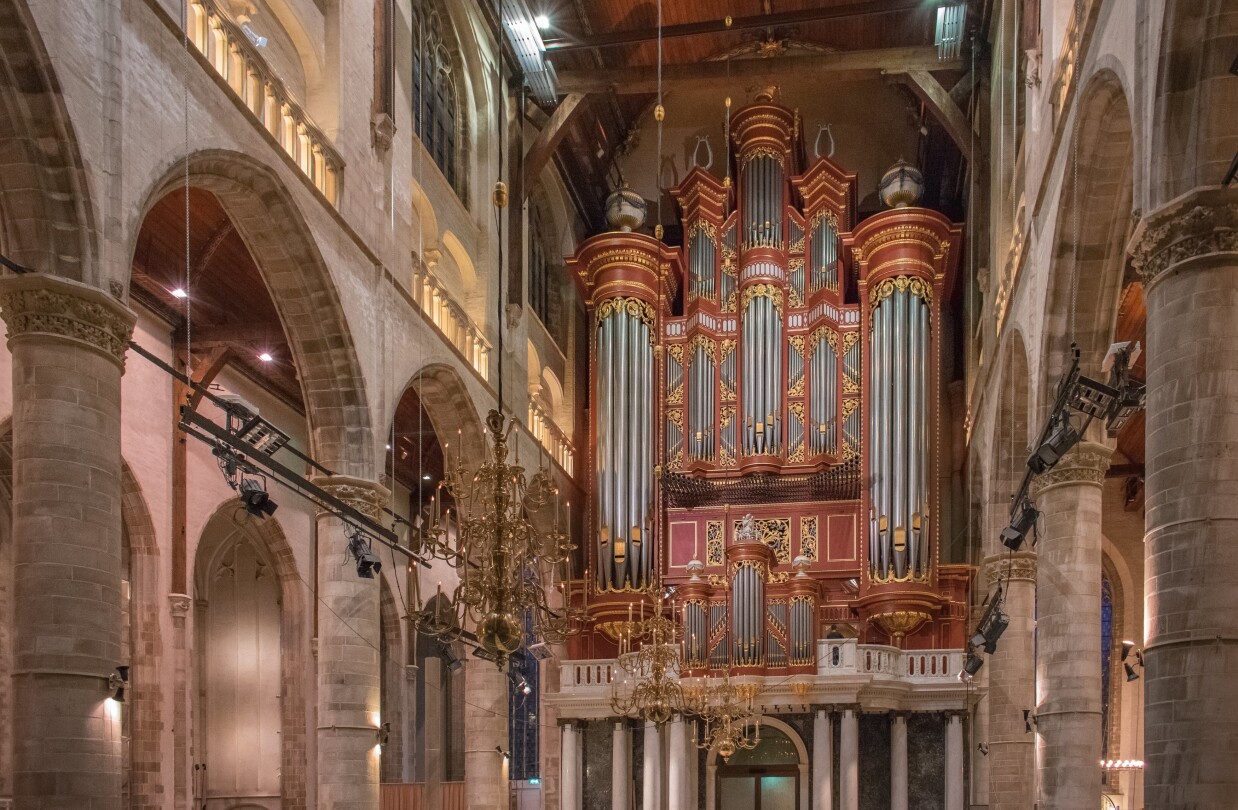Schiedam Grote Kerk
The oldest mention of an organ in the Grote Kerk dates back to 1498 when Allaert Dirckz was reappointed as organist. The builder of that organ is not known. What we do know is that around 1550, the renowned organ builder Hendrik Niehoff built a new instrument consisting of Hoofdwerk and Rugwerk. The casings, which largely determine the appearance of the organ to this day, were adorned with beautifully painted shutters. In 1680, Appollonius Bosch expanded the organ with a modest Bovenwerk. Presumably, the wind chests of the other works were also replaced at that time. Given the mention of the year 1680 in the ornamentation between the pipe fields of Hoofdwerk and Rugwerk, it is likely that the front layout was also modified.
In 1712, Jacob Cools expanded the organ in two substantial new side casings, adding a free pedal. The resulting width effect gives the organ a completely different appearance. The ornamentation between the main casing and pedal casings was added in 1724 by the Rotterdam sculptor Alexander Pluskens. Sculptor François van Douwe created the carvings on the pedal casings and the main casing. Also, the statue on the central tower of the trumpet-blowing angel is his work. In 1737, Rudolph Garrels added a fifth bellows and a new pedal keyboard.
The Flentrop organ
The Flentrop Organ In 1971, Flentrop Orgelbouw in Zaandam was commissioned to create a new instrument. The stylistic starting point is the remaining historical material from Niehoff. The new pipework is therefore made of organ metal with a high lead content and wide scales. The organ is tuned in a Werckmeister III temperament. Thus, the facade and the instrument form an organic unity again. The organ was put into use in 1975.

Schiedam Grote Kerk
Specifications
General
- Flentrop, 1975
- 3 manuals
- 41 stops
